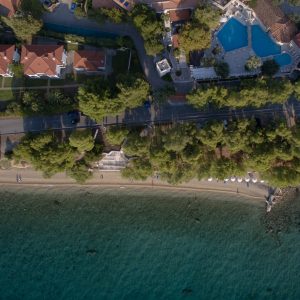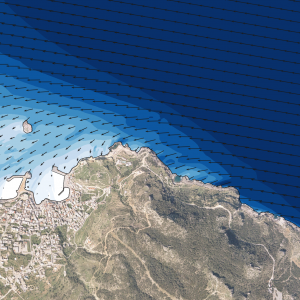Marine Fenders provide the necessary interface between the berthing ship and the berth structure and therefore the principal function of the fender is to transform the impact load from the berthing ship into reactions, which both the ship and berth structure can safely sustain (Carl A. Thoressen).
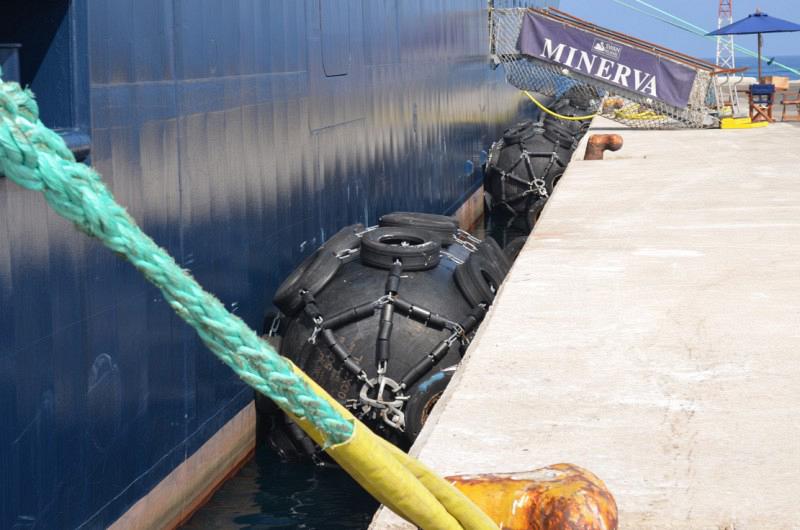
Marine fenders typically operate as a group of single units where the type, location and density of their installation or deployment depends on several factors including their technical specifications, berth structure, ship type, etc. (see Photo 1).
The basic function of the marine fenders is to manage the excess kinetic energy of the ship during the approach or berthing operation preventing damage to occur in both the ship and the berth. In case of elastomeric fenders the excess kinetic energy is stored within the elastic elements, which are deformed by developing a counter parallel (to the motion of the ship) reaction force, which results in slowing down the vessel and keeping it to a safe distance from the quay.
The effectiveness of the fender system depends on the following three basic parameters:
- The correct system design (selection of suitable fender types and optimum arrangement),
- System operation according to the manufacture specifications,
- Regular inspection and system maintenance.
The fendering system design is a specialized study which is sometimes omitted or incorrectly performed with the result that money is wasted for the supply of systems which are often unsuitable for the intended use (See photos 2.3 and 4).
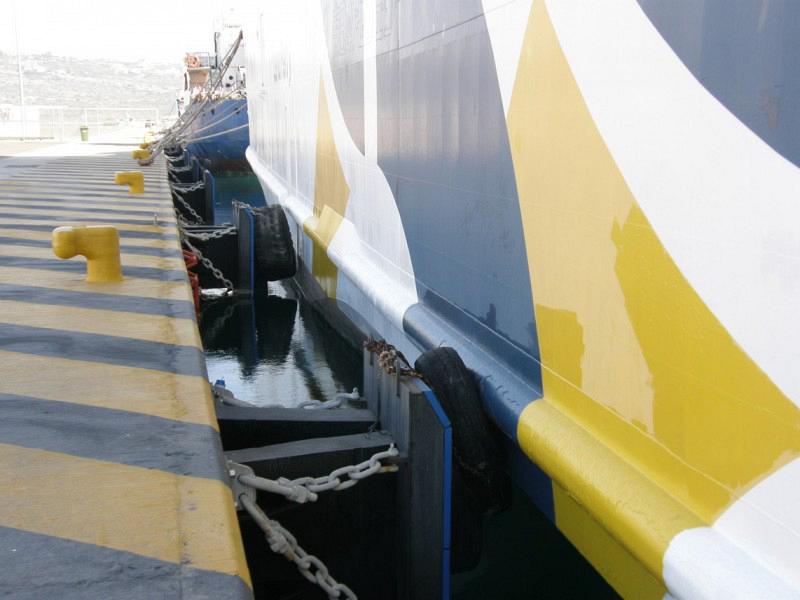
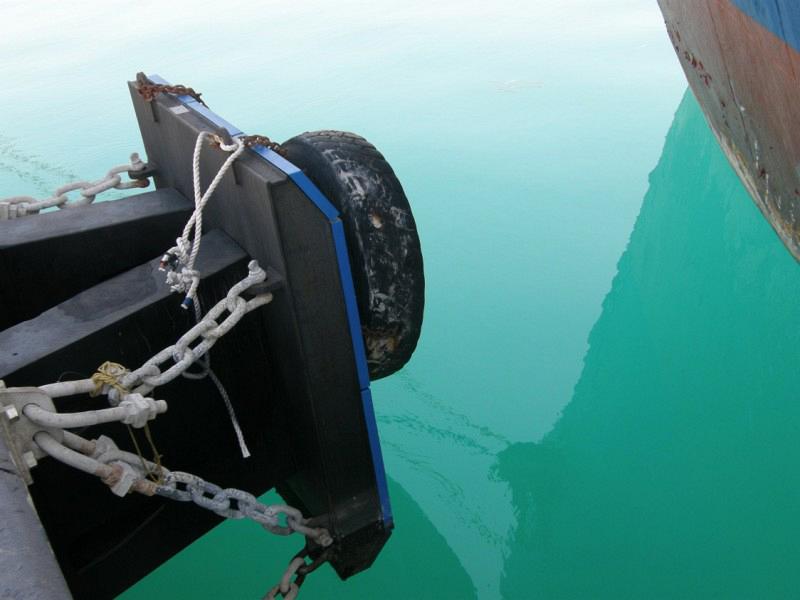
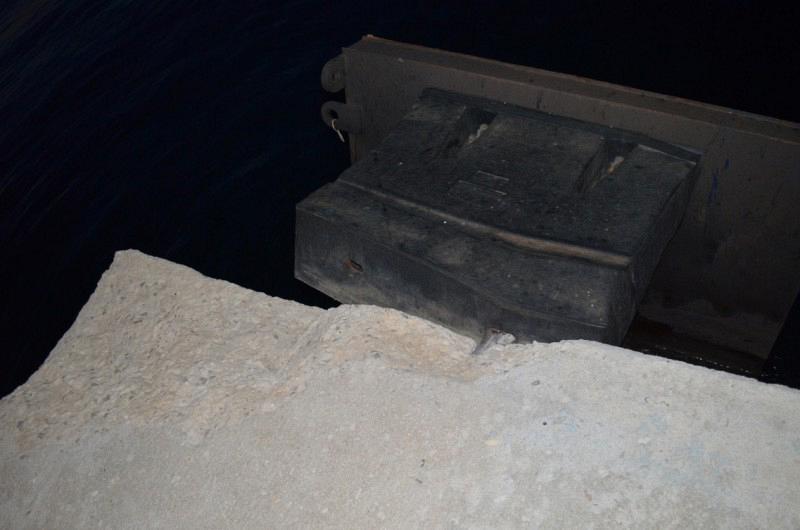
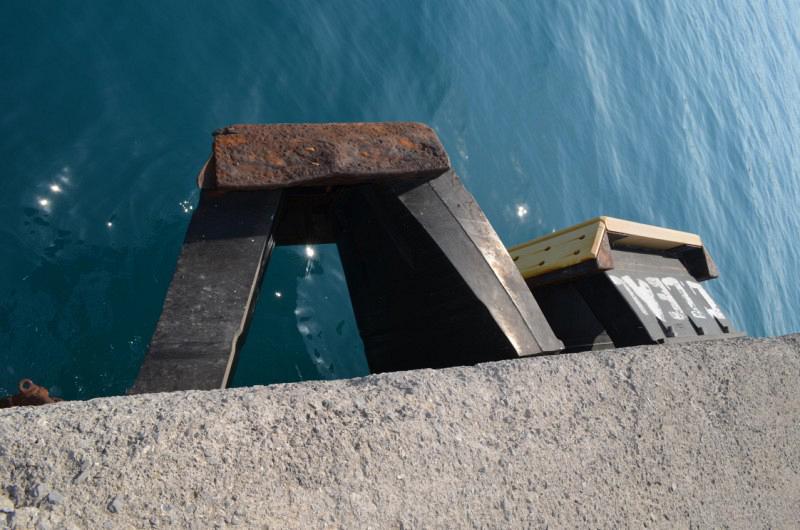
The successful design of a fender system should follow the following basic steps (PIANC 2002):
- Determination of system requirements,
- Determination of operating characteristics,
- Assessment of the berth type where the system will be installed,
- Assessment of design parameters,
- Calculation of impact energy which will be received by the fender system (either during berthing or loading and unloading operations),
- Appropriate system selection, according to the total energy absorption requirements and system design criteria,
- Assessment of the reaction force and the associated frictional forces between fender and vessel,
- Berthing vessel resistance capacity check to reaction force generated by the selected fender system.
The correct calculation of the design impact energy is particularly important because the selection of a suitable fender system will be based on that, while generally the principle «the Bigger the Better» does not apply. In fact the fender which has greater energy absorption than that required considering the design ship and the conditions of impact is more rigid developing greater reaction force and exerting inevitably greater pressure on the contact surface with the ship. These fenders require the application of a “larger impact force” to operate which may ultimately cause permanent deformation to the ships metal surfaces if the reaction force is greater than that of metal surface strength. Therefore, instead the impact energy being absorbed and converted to manageable reaction force solely by the fenders, in the case of a "harder" fender that greater force will deform the metallic surface of the vessel as well, causing damage to it.
On the other hand the under sizing of a fender system will cause its failure with adverse consequences to the berth and the vessel.
In many Greek ports improvised questionable quality and efficiency fender systems are used (see fig. 6 and 7) without specifications. In photo 7 a fender system made by used rubber tires can be seen suspended from a quay wall that has experienced damage from its insufficient operation.
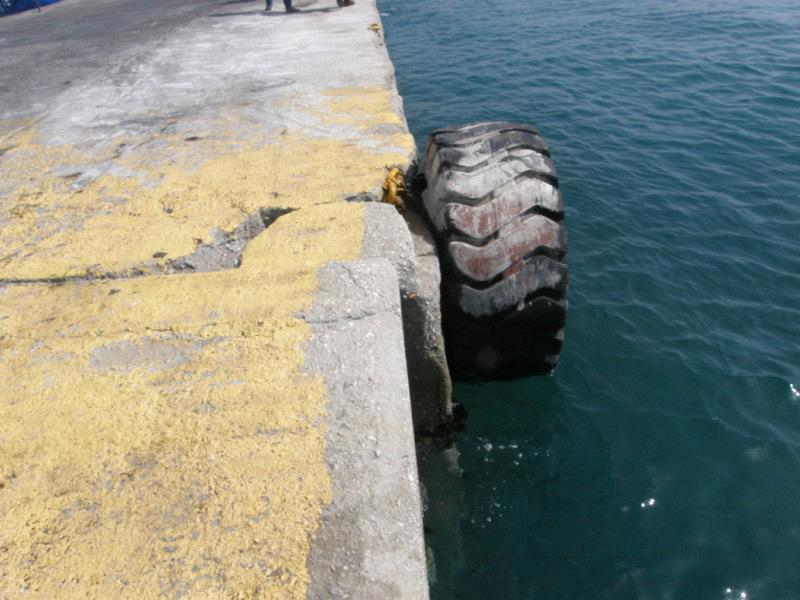

Finally, equally important is the annual inspection of the fender system for damage. The inspection should be performed by experienced engineers so as to maintain the system in working condition and within the design specifications. In order to prolong the useful life of a system, any damage must be repaired according to product specifications and without altering its functional characteristics.
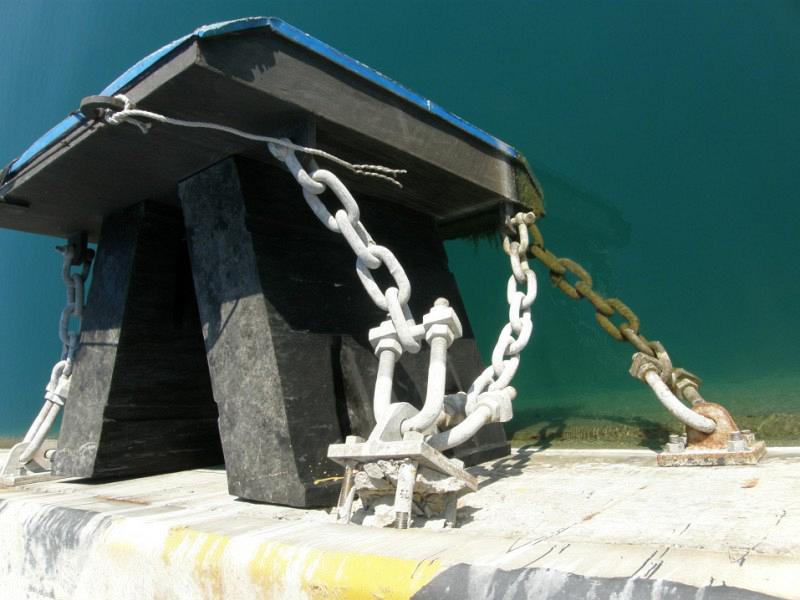
Marine fenders are considered standard equipment for a berth and their effective operation can prevent significant damage to ships and infrastructure. The maintenance cost savings for a marine facility equipped with a well-functioning fendering system is significant and exceeds the purchase, installation and maintenance cost, provided of course that the system design is supported by a comprehensive study.

